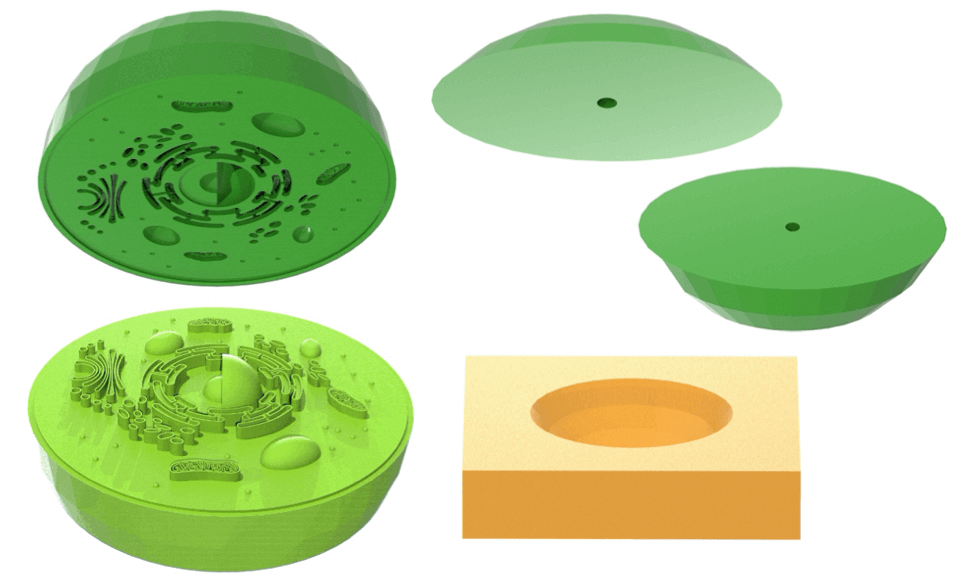
Technichal Specifications
How to use this exercise?
Show the animal cell printed in 3D for better visualization and understanding.
Number of pieces of this exercise
5
General description
The model consists of 5 pieces:
1) A cylindrical base with a housing to house the sphere.
2) A portion of the cell that acts as a base for the entire cell.
3) A layer containing the nucleus the endoplasmic reticulum. ribosomes, mitochondria and the Golgi complex.
4) A layer that close the part before.
5) The last piece represents the hemisphere which must enclose the entire shape of the cell.
Additional Material
Models used:
License Info
Attribution 4.0 International (CC BY 4.0) https://creativecommons.org/licenses/by/4.0/You are free to:
Share — copy and redistribute the material in any medium or format
Adapt — remix, transform, and build upon the material
for any purpose, even commercially.
Under the following terms:
Attribution — You must give appropriate credit, provide a link to the license, and indicate if changes were made. You may do so in any reasonable manner, but not in any way that suggests the licensor endorses you or your use.
No additional restrictions — You may not apply legal terms or technological measures that legally restrict others from doing anything the license permits.
Learning Specifications
How can the model be used in class?
The class will have to compose, interlocking all the organelles that are inside the cell, identifying the structures, the composition and the function of each element.
What benefits can its use have?
Students will touch what is often only explained in a theoretical way.
Can it be used in other subjects?
Chemistry